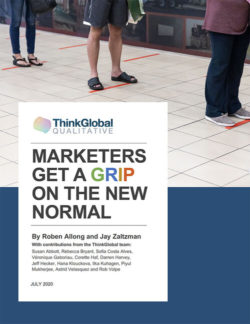OK,
maybe I’m overstating it … or am I?
The
pandemic has caused significant changes for almost every company. Many have seen a sharp drop in revenue. Others have had revenues remain the same or
even increase, but customers’ needs have changed. Many have new rules and restrictions about
how they can do business. Some
restrictions may be relaxed soon… but customers aren’t sure it’s safe to go
back to their old behaviors.
The
result of this chaos can be summed up in one word: Disruption. And when it comes to dealing with
disruption, companies that fail to innovate do so at their peril.
We’ve
all heard the stories of companies that ignored disruptions going on around
them. Nokia didn’t realize that data
would become more important to users than voice. Kodak ignored digital photography. Blockbuster refused to believe their model
could be improved upon.
And
then there are the companies that recognized disruption and innovated. Netflix was in the business of mailing DVDs
to their customers. The company saw the
growth in high-speed internet and developed its streaming service.
More
recently, online meeting provider Zoom grew immensely as a result of the
lockdown… and then had to deal with significant disruption when security
flaws were discovered. As a result, many
companies and organizations stopped using Zoom.
The company reacted quickly, releasing versions of their software that
addressed vulnerabilities and going so far as to acquire security company
Keybase to help with their security and privacy efforts. Now the New York City Department of Education
and other organizations have lifted their bans on Zoom use.
So
how can you ensure your company doesn’t get crushed by disruption?
We
recommend conducting a brand innovation process, which includes the
following:
- A review of how the competitive landscape has changed as a
result of the current crisis
- Research with customers and prospects to understand how they feel
and what they are doing right now
- Disruption workshop with your key stakeholders.
Looking at each of the “4 Ps” –Product, Price, Place, and Promotion
– what has changed in the current environment?
How should the brand evolve to address those changes? A SWOT exercise leading into brainstorming: what
could be done better or differently when it comes to each of the four Ps? What are ways to leverage the company’s
strengths and opportunities (including new opportunities) in order to overcome
the weaknesses and threats?
Can Bureau West help? I thought you’d never ask! I have teamed up with Joe Sharlip, an expert brand strategist, to offer brand innovation to our clients. Call me at 760-469-9266 or email info at bureauwest.com to discuss how best to tailor the process for your needs.


